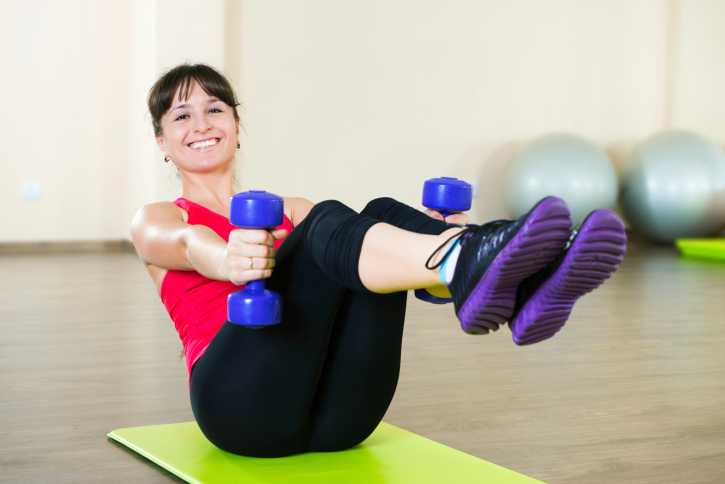So you’re thinking about starting to exercise? That’s great! Exercise is one of the best things you can do for your health. There are so many benefits to exercise, including reduced risk of disease, weight control, stronger bones and muscles, increased stamina and energy, improved sleep, greater confidence, and overall improved outlook!
Follow these steps to help you get started with exercise:
- Talk to your doctor. It’s always a good idea to talk to your doctor before starting an exercise routine, especially if you are at risk for or being treated for a medical condition, or if you have had a previous injury.
- Determine your fitness goals. What are your goals? Do you want to lose weight? Are you preparing for a 5K? Your reasons for exercising will help you determine where to start and help you track your progress.
- Choose your activity. What kinds of exercises interest you? What would you find fun and enjoyable? Ensuring you choose something you like doing helps with follow-through. Walking is a great option if you’ve never exercised or if it has been a while since you have.
- Dress appropriately. Make sure you have the correct shoes, clothes and gear necessary for your activity.
- Develop an exercise schedule. This step can significantly impact follow-through and motivation to make exercise part of your routine, rather than something you’re forcing yourself to do. Create a set plan by identifying what days and times you plan to exercise, as well as your exercise duration.
- Get started. Once you’re ready to begin, get to it! Be sure to go at your own pace and don’t overdo it. Starting slow and gradually building your strength is necessary to avoid accident or injury.
- Plan time to recover. You should allow your body time to rest and recover between exercise sessions.
Maximize your exercise with the following tips:
- Balance your routine. According to the American College of Sports Medicine, there are four parts required to create a balanced exercise routine. These include: cardio/aerobic, resistance/strength, flexibility, and neuromotor exercise.
- Aim for at least 150 minutes of moderate-intensity aerobic activity such as walking, jogging, dance, swimming, just to name a few.
- Try to get two or more days of resistance or strength training per week. Be sure to rest for at least 48 hours between sessions. Learn more about strength training here.
- Stretch or participate in exercises that require flexibility 2 or 3 days per week. Looking for ideas? Try yoga!
- Perform neuromotor exercises or those that require balance and coordination 2 or 3 days per week. Tai chi is a great example of a neuromotor exercise.
- Get creative. Exercising the same way all the time can get monotonous and boring. Be sure to think of several types of exercises that you would enjoy and alternate doing them. Not only will this help you stay motivated, but it can help you avoid weight loss plateaus as well as boost your performance.
- Make exercise fun and functional. Do chores that get you moving like gardening, cleaning or other projects around your home. Turn everyday activities into exercise like parking further away from the door or taking the stairs rather than the elevator. Try outdoor activities like hiking, swimming, biking, ice skating and skiing.
- Find a workout buddy. Pick a person to exercise with for extra accountability and support. You can even get exercise while spending time with your family!
- Always keep moving. Avoid remaining sedentary during your waking hours by getting up and moving around as much as you can. Even if you’re exercising, sitting for too long during the day can have negative consequences on your health. Check out these tips to reduce sedentary behavior.
For Health Advocate Members
If you’re a Health Advocate member with access to our Wellness Coaching Program, call us today to connect with a Wellness Coach for more exercise guidance and fitness tips!



